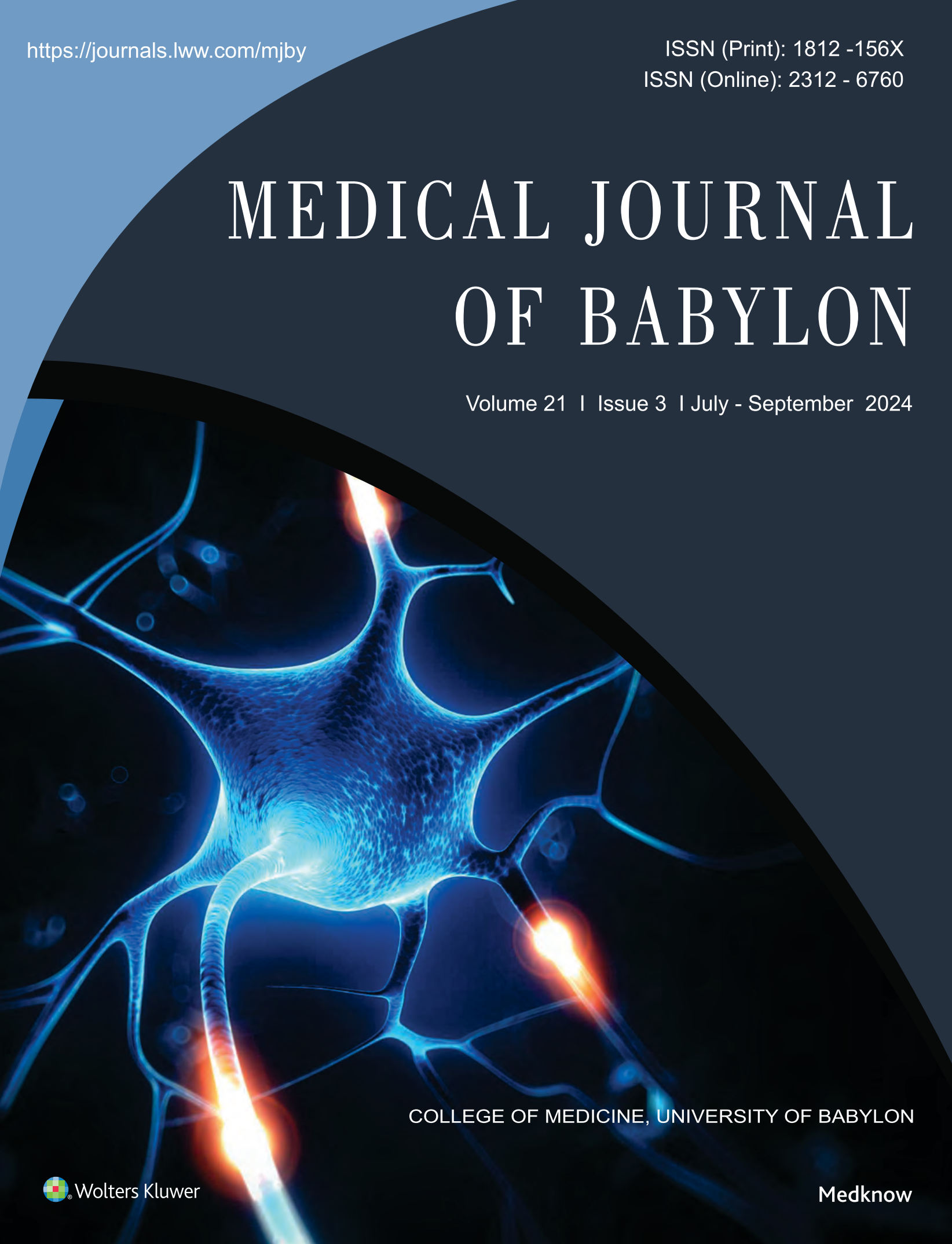Abstract
Background: Aortic valve sclerosis (AVS) is an important clinical disorder that often presented asymptomatically in many adult peoples.It carries an adverse outcome for cardiovascular system. It is an early stage of aortic valve stenosis as well as being a marker for cardiovascular disease.
Objectives: The study aims to determine relationships and its levels between AVS and some echocardiographic parameters that associated with this important acquired valvular disorder.
Materials & Methods: The study was carried out on 93 patients with aortic valve sclerosis (cases group) and 97 patients without AVS (control group) , patients were attended to Marjan Teaching Hospital from 1st of December 2010 to 30 of May 2011, echocardiographic study had been done for each one of them.
Results: The study results revealed that there was a high significant decrease (p<0.01) in ejection fraction(EF%) in patients of AVS compared with the non AVS group as well as very high significant increase (p<0.001) in each of pressure gradient (PG) and blood flow velocity across aortic valve in patients of AVS compared with the non AVS group.
In addition, the study showed that there was high significant increase (p<0.01) in left atrial dimension(LAD),significant increase (p<0.05) in interventricular septum thickness (IVS) and significant increase (p<0.05) in posterior wall thickness (PWT) of AVS group of patients compared with the non AVS group, besides to high significant difference (p<0.01)in aortic valve regurgitation, mitral annular ring calcification and aortic root calcification between the two groups.
Conclusion:In adult with aortic valve sclerosis (AVS) is associated with echocardiographic findings of preclinical CVD: increase in pressure gradient and blood flow velocity across aortic valve, decrease in ejection fraction% with abnormal left ventricular geometry (increase interventricular septum thickness, posterior wall thickness), increase left atrial size, aortic valve regurgitation, mitral annular ring calcification and aortic root calcification that may contribute to the adverse prognosis associated with aortic valve sclerosis.
Objectives: The study aims to determine relationships and its levels between AVS and some echocardiographic parameters that associated with this important acquired valvular disorder.
Materials & Methods: The study was carried out on 93 patients with aortic valve sclerosis (cases group) and 97 patients without AVS (control group) , patients were attended to Marjan Teaching Hospital from 1st of December 2010 to 30 of May 2011, echocardiographic study had been done for each one of them.
Results: The study results revealed that there was a high significant decrease (p<0.01) in ejection fraction(EF%) in patients of AVS compared with the non AVS group as well as very high significant increase (p<0.001) in each of pressure gradient (PG) and blood flow velocity across aortic valve in patients of AVS compared with the non AVS group.
In addition, the study showed that there was high significant increase (p<0.01) in left atrial dimension(LAD),significant increase (p<0.05) in interventricular septum thickness (IVS) and significant increase (p<0.05) in posterior wall thickness (PWT) of AVS group of patients compared with the non AVS group, besides to high significant difference (p<0.01)in aortic valve regurgitation, mitral annular ring calcification and aortic root calcification between the two groups.
Conclusion:In adult with aortic valve sclerosis (AVS) is associated with echocardiographic findings of preclinical CVD: increase in pressure gradient and blood flow velocity across aortic valve, decrease in ejection fraction% with abnormal left ventricular geometry (increase interventricular septum thickness, posterior wall thickness), increase left atrial size, aortic valve regurgitation, mitral annular ring calcification and aortic root calcification that may contribute to the adverse prognosis associated with aortic valve sclerosis.
